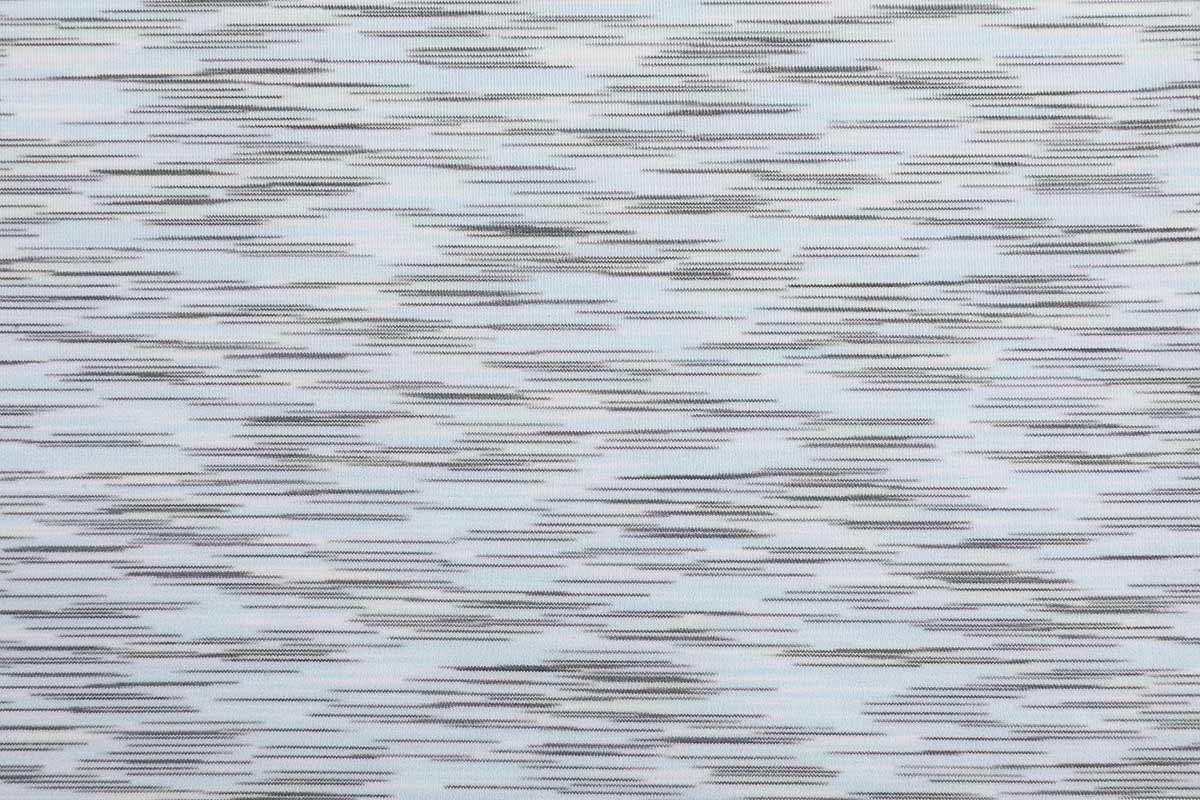Moisture management in weft knit fabric refers to the fabric's ability to handle moisture, such as sweat or moisture from the environment, by wicking it away from the body and allowing it to evaporate. Moisture management is particularly important in activewear, sportswear, and outdoor clothing where comfort and performance are crucial. Here's how weft knit fabrics manage moisture:
Wicking Properties: Weft knit fabrics with moisture management properties are designed to wick moisture away from the body. This means that when you sweat, the fabric quickly absorbs the moisture and spreads it over a larger surface area, away from your skin. This helps in preventing the feeling of wetness and discomfort during physical activities.
Quick Drying: Moisture-wicking weft knit fabrics are engineered to dry quickly. Once the moisture is moved away from the skin, the fabric allows it to evaporate into the surrounding environment. This rapid drying process helps in maintaining comfort and regulating body temperature.


Breathability: Many weft knit fabrics are naturally breathable, which aids in moisture management. The knit structure often features small openings that allow air to circulate, helping to keep the body cool and aid in the evaporation of sweat.
Fiber Selection: The choice of fibers in the fabric composition can influence moisture management. Synthetic fibers like polyester are known for their moisture-wicking properties. Blending natural fibers with synthetics can create a fabric that combines the comfort of natural fibers with the moisture-wicking capabilities of synthetics.
Special Finishes: Some weft knit fabrics may be treated with special finishes or coatings to enhance their moisture-wicking properties. These finishes can further improve the fabric's ability to repel moisture and facilitate quick drying.
Construction and Weight: The construction of the knit, including the density of stitches and the weight of the fabric, can affect moisture management. Lightweight and open-knit fabrics often excel in moisture management because they allow for better airflow and faster drying.
Layering: Moisture management can also be influenced by how the fabric is used in a garment. Layering moisture-wicking weft knit fabrics with other layers can help regulate moisture and maintain comfort in a wider range of conditions.
Activity Level: The effectiveness of moisture management may vary depending on the activity level and environmental conditions. High-intensity activities may generate more sweat, requiring fabrics with desirable moisture-wicking properties.
Garment Design: The design of the garment can impact moisture management. Garments designed with strategic ventilation or moisture-wicking zones can enhance overall performance.
Moisture management in weft knit fabric is achieved through a combination of factors, including the fabric's inherent properties, fiber selection, construction, and sometimes special treatments. These fabrics are designed to keep the wearer dry and comfortable during physical activities, making them suitable for sports, outdoor adventures, and any situation where moisture control is essential.




 简体中文
简体中文
